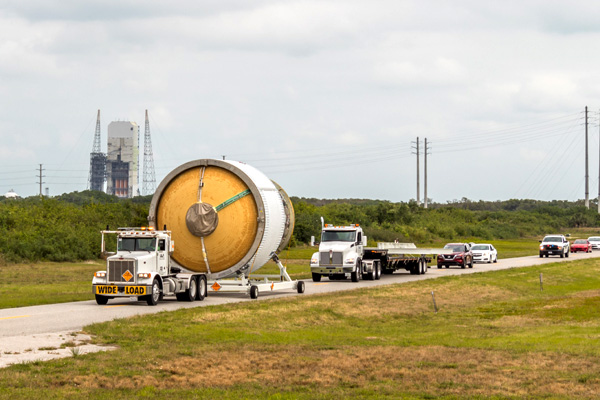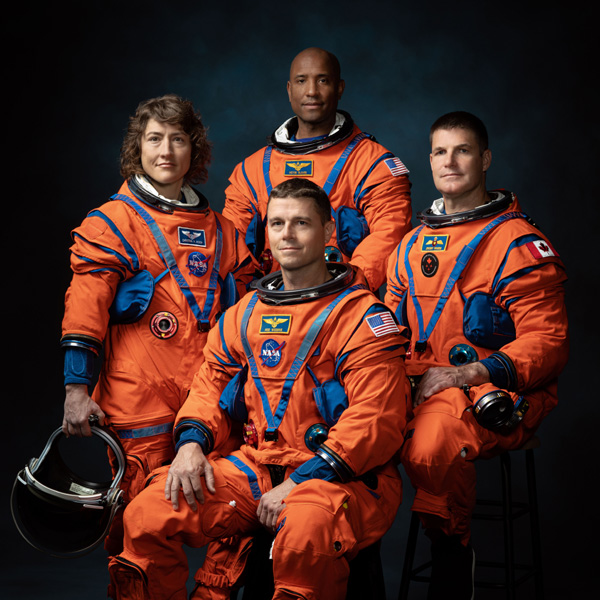
United Launch Alliance
ICPS-2: ULA Begins Readying Upper Stage for Artemis II Launch (News Release)
The second Interim Cryogenic Propulsion Stage (ICPS), derived from the United Launch Alliance (ULA) Delta IV Heavy rocket, is beginning pre-flight testing and preparations to help launch four pioneering astronauts on NASA's Artemis II mission around the Moon.
ICPS serves as the upper stage of the Space Launch System (SLS) rocket to send the Orion spacecraft on lunar exploration missions. The fully-integrated SLS, ICPS and Orion system successfully performed the uncrewed Artemis I test flight in 2022.
ULA has manufactured three ICPS stages in our factory in Decatur, Alabama, under a collaborative partnership with Boeing. The stages will be used for the initial three SLS rockets.
ICPS-2 was delivered to ULA facilities at Cape Canaveral in 2021. The stage recently came out of storage and moved into a test cell at the Delta Operations Center to begin undergoing checkouts and processing to support the Artemis II launch.
The ICPS is based on the five-meter-diameter version of ULA's Delta Cryogenic Second Stage (DCSS) that has flown on Delta IV missions since 2004 with 100 percent mission success. ICPS-1 performance for the Artemis I mission was nominal, delivering the push needed to send Orion out of Earth orbit to travel around the Moon.
ICPS features a slightly larger liquid hydrogen tank as compared to the Delta IV second stage, as well as electrical and mechanical interfaces specific to attaching and supporting the Orion spacecraft, and a second hydrazine bottle for additional attitude control propellant.
The ICPS for Artemis II also includes an Emergency Detection System (EDS) and other hardware changes specific to human safety.
The stage feeds liquid hydrogen and liquid oxygen to the Aerojet Rocketdyne RL10C-2 main engine to produce 24,750 pounds (110.1 kilo-Newtons) of highly-efficient thrust.
The ICPS-2 stage on Artemis II will provide the boost for the Orion capsule and its four astronauts to reach the desired high-Earth orbit stretching 68,000 miles (109,435 km) above the planet before separating from the Moon-bound spacecraft.
The stage will also be used as a target object for Orion to test rendezvous and proximity operations.
The approximately 10-day Artemis II flight will prove the Orion spacecraft's life-support systems and validate the capabilities and techniques needed for humans to live and work in deep space.
NASA has assigned three Americans and one Canadian Space Agency astronaut to the mission: Commander Reid Wiseman, Pilot Victor Glover, Mission Specialist 1 Christina Hammock Koch and Mission Specialist 2 Jeremy Hansen.
Source: United Launch Alliance
****

United Launch Alliance

NASA

No comments:
Post a Comment